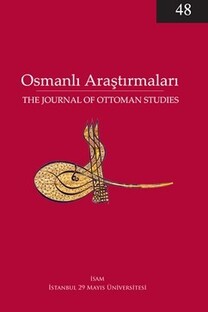Relocating the center of the universe: China and the ottoman ımperial project in the sixteenth century
Osmanlı İmparatorluğu, onaltıncı yüzyılda, Doğu’da Safavi Devleti ve Batı’da Habs- burg İmparatorluğu ile yoğun askeri çatışma içinde idi. Bu çatışmaların yaşandığı dönemde, Osmanlı İmparatorluğu’nda dünyanın diğer bölgelerine dair coğrafi ve tarihi bilgilere olan ilgi artmıştır. Dünya coğrafyası ve tarihine artan bu ilgi, Osmanlı’nın evrensel imparatorluk hakimiyeti iddiasının hem Doğu hem de Batı’daki politik ve dini rakiplere karşı belirgin bir şekilde açıklanması zorunluluğu ile yakından alakalıdır. Bu makale, Ali Ekber Hitayi ve Seyfi Çelebi’nin Çin hakkındaki eserlerinden yola çıkarak, onaltıncı yüzyılda Osmanlı sarayı için hazırlanan coğrafi ve tarihi eserlerde, Çin’in evrensel imparatorluk modeli olarak sunulduğunu göstermektedir. Bu model, Osmanlı sarayı için hem kopya edilecek bir örnek, hem de Osmanlı’nın evrensel imparatorluk iddiasının yansıtıldığı bir aynadır.
Evrenin merkezini yeniden yerleştirmek: çin ve onaltıncı yüzyılda osmanlı impara- torluk projesi
In the sixteenth century, Ottoman encounters with the Habsburg Empire in the West and the Safavids in the East turned violent as they fought these rival empires on the battlefields. This article argues that there was a heightened sensitivity to geographical and historical knowledge about different parts of the world in the sixteenth century Ot- toman Empire. It claims that this development was intimately related to the articulation of the Ottoman claims to universal imperial sovereignty that had to be broadcast to the political and religious rivals both in the East and the West in the sixteenth century. Through an examination of Ali Ekber Khitayi’s from 1516 and Seyfi Çelebi’s from 1582, this paper demonstrates that the historical and geographical accounts prepared for the Ottoman court in the sixteenth century created China as a model to emulate and as a mirror to reflect Ot- toman imperial ambitions.
